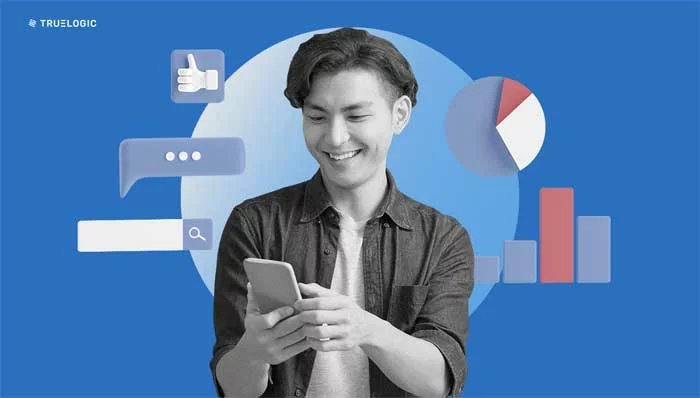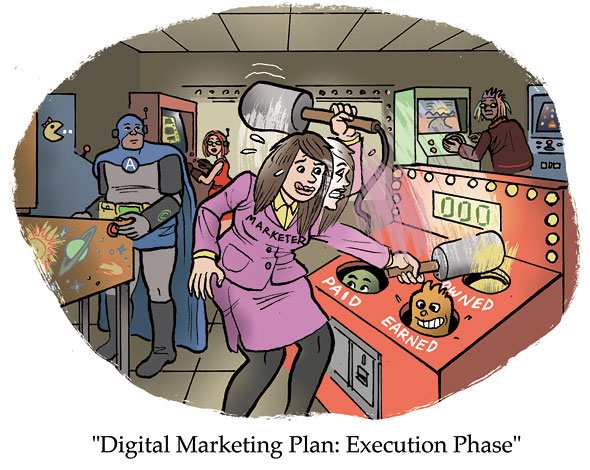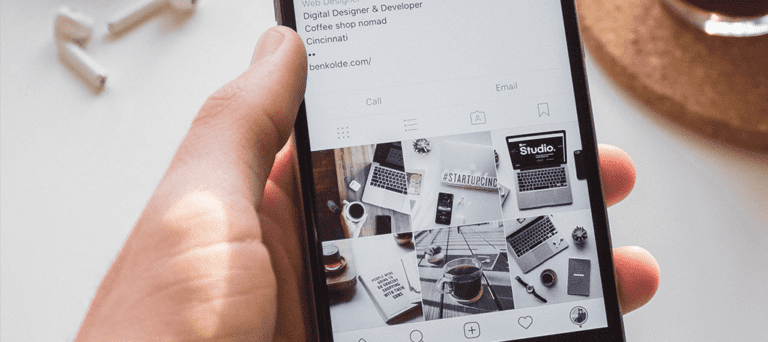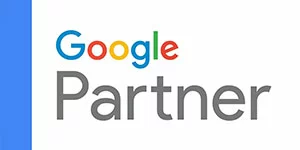Hyper-Personalization in an AI era

Marketing used to be about reach. Whoever shouted the loudest won. But today, everyone’s shouting, and the crowd’s wearing noise-cancelling headphones.
Between rising ad costs, new digital taxes, and the daily scroll of infinite content, Filipino consumers have learned to tune out what doesn’t serve them. They swipe, and scroll with precision. The old playbook of broad targeting and mass messaging isn’t just inefficient, it is available.
Enter hyper-personalization: marketing that knows not just who your customer is, but what they need right now. It’s the shift from audience thinking to individual relevance, powered by data, AI, and a healthy respect for privacy.
And in a market as young and creator-led as the Philippines, this isn’t a trend. It’s survival.
The cost of Attention (and Why It’s Rising)
If marketing were a math problem, today would be the year the equation stopped balancing.
Customer acquisition costs are rising, loyalty is slipping, and paid media is eating a bigger share of every brand’s budget. Google Search CPCs are up 7% year-over-year, Meta’s CPMs climbed 12%, and since June 2025, a 12% VAT on digital services has added yet another layer of costs for advertisers.
It’s the “same money, less reach” dilemma. Every impression costs more, every click is harder to earn, and every campaign fights a little harder to stay relevant.
And the truth is, it’s not just about the cost, it’s about attention. The modern Filipino consumer is overstimulated and underimpressed. 71% of shoppers say they’ll abandon a purchase if the experience feels irrelevant.
So where do you find your edge when everyone else is spending more, saying more, and showing up everywhere?
If we can’t outspend our competition, we must find another edge”
That’s the new currency of today’s marketing. Not reach. Not volume. Not noise. Just relevance, delivered at the right moment, to the right person, on the right screen.
Understanding the Filipino Consumer
Let’s talk about who we’re trying to reach.
The average Filipino today is young, hyperconnected, and allergic to anything that feels marketing. The country’s median age is just 26, and nearly nine out of ten FIlipinos are on Google or YouTube daily. TikTok reaches more than 80% of adults aged 18 and up, and that reach keeps growing, up 27% year over year.
On social media, influence doesn’t flow top-down anymore. It’s peer-to-peer, creator-to-community. Almost 45% of Filipinos aged 16 and older follow influencers, which makes them the most creator-engaged audience in the world. That says a lot about how people choose who to trust, and who to ignore.
This is a generation raised on instant feedback and infinite scrolls. They can smell sales language a mile away. They’re not looking for perfect brands, they’re looking for real ones. The kind that sound human, show up where they are, and speak their language, literally and emotionally.
Hard pill to swallow, but today, you can’t win their attention with reach alone. You win by relevance. Basically, by showing something that feels made for them, not at them. Because the new consumer doesn’t sit still for your campaign. They swipe, skip, and scroll at light speed.
And if your content doesn’t earn its keep in the first three seconds, it’s gone, just another thumb flick in the endless feed.
The Shift to Hyper-Personalization
Let’s clear something up right away: personalization is not about putting a first name in an email subject line. That trick stopped working when inboxes stopped feeling personal.
What we’re talking about is hyper-personalization—emphasis on the “hyper.” It is a level of marketing precision that moves at the same pace as your customer. It;s not based on who they were last week or what they might like someday. It’s driven by what’s happening right now.
Hyper-personalization is state-driven marketing. A strategy built on three dynamic pillars.
What are the Pillars of Hyper-Personalization?

When you combine these three, you stop sending messages into the void. You actually start designing experiences that make sense to each person, in their current state. That’s the real shift. Hyper-personalization changes the questions from “Who’s my audience?” to “What does this person need right now?” to “What does this person need right now?”
It’s also where AI earns its keep. Traditional personalization relied on static segments and human-written rules, the “send this offer to everyone inactive for 30 days” kind of rule. But AI allows us to make those decisions in real time, understanding patterns faster than a marketer ever could. It decides the next best action for every individual: maybe that’s an offer, maybe it’s a helpful nudge, or maybe it’s knowing when to stay quiet.
The result is relevance that feels invisible. Your brand simply knows when to show up and when to take a step back. That’s the kind of intuition customers reward with loyalty.
The Business Case of Hyper-Personalization
If hyper-personalization sounds like a lot of work, that’s because it is. But, it’s also work that pays off—like big time—consistently, measurably, and fast.
Across industries, brands that personalize deeply outperform those that don’t. Mckinsey found that personalization drives an average of 10-15% in revenue lift, boosts marketing-spend efficiency by 10-30%, and can cut customer acquisition costs by up to 50%.
Boston consulting group (BCG) backs that up. Companies leading in personalization grow revenue around 10 percentage points faster than their slower peers. Their research also found that personalized offers deliver up to three times higher returns than mass promotions.
Even from the consumer side, the payoff is clear. Deloitte’s 2024 study found that customers spend 50% more with brands that personalize effectively, while Twilio’s 2025 report shows that 88% are more likely to buy when personalization happens in real time.
Because when you stack those numbers side-by-side, the higher revenue, the better retention, the lower CAC, you realize that personalization isn’t a creative luxury. It’s a business strategy hiding in plain sight.
Every campaign that fails to personalize leaves money on the table. Every irrelevant impression is a cost you pay twice: once for delivery, and again in lost trust. That’s why the fastest-growing companies don’t think of personalization as a campaign feature. Rather, they treat it as an engine.
Trust, Consent, and the Value Exchange
If personalization is the engine, then trust is the fuel. Without it, even the best data strategy sputters out.
The truth is, personalization only works when people willingly share their information, and they’ll only do that if the exchange feels fair. In other words, consent has to feel like a trade, not a trap—or even better, a value exchange.
And in the Philippines, this isn’t just good practice, it’s policy. Under the Data Privacy Act (RA 10173) and the National Privacy Commission’s 2024 consent circular, brands are expected to collect and use data transparently, with clear value for the customer.
It is a way to make data collection transparent, meaningful, and mutually beneficial. Because when people can see the benefit, they share more. And when they share more, your personalization loop gets smarter.
So, how do you get it right?
What are the Rules for Getting Consent Right (and Keeping It)
1. Use Plain Language
Skip legalese. Say what you’re collecting, why you’re collecting it, and how it improves their experience right now.
2. Offer Immediate Benefit
Don’t make users wait for next quarter’s campaign. When someone shares their preferences, reward that trust instantly, with better recommendations, faster service, or early access.
3. Give Easy Control
Let people choose their channels, frequency, and topics. And yes, make it easy to unsubscribe or pause communications without hunting for a buried link.
When you follow these rules, you stop treating consent like a checkbox and start treating it like a relationship. It’s an ongoing conversation where the customer decides how much to share, and you prove—again and again—that their data makes their experience better.
Infographics: Header: Consent, Trust & Value Exchange Flywheel
Visual: loop (flywheel) infographics showing these terms (accompany them with icons for each term). Consent – value – loyalty – more data – even more value
The AI Advantage
AI isn’t coming for marketers’ jobs, it’s coming for their busywork.
The real advantage of AI in personalization isn’t that it automates what we do; it amplifies what can’t do fast enough. The data, the timing, the micro-decisions, AI connects all the dots us humans can’t keep up with.
But it also pays to know that not all AI works the same way. In marketing, there are two types of AI to understand: Traditional AI and Generative AI. One predicts behavior. The other creates experiences.

How Traditional AI Predicts?
It powers things like lead scoring, product recommendations, churn prediction, dynamic pricing, demand forecasting, and sentiment analysis. In short, it’s the brain that anticipates what your customers might do.
Generative AI Creates?
It can create personalized visuals, copy, video, even synthetic audiences for testing. It powers AI assistants, chatbots, and brand storytelling that feels tailored for every user. This is the creative muscle, the part that lets brands respond instantly, not someday.
Together, they shift personalization from campaigns to conversations, from static segments to adaptive experiences. Traditional AI predicts who to reach; Generative AI decides how to talk to them. And that’s the real magic. When both are working in sync, you’re no longer optimizing ads—you’re orchestrating moments.
From Data to Decisions

When all your data finally lives in one place, the picture changes.
You stop seeing numbers, you start seeing people. A unified 360° view shows not just what customers tell you, but what they do, and what’s true for them right now. No spreadsheet, no hopping between dashboards, no silos. Just one view that actually makes sense.
On top of that live view runs a simple, powerful idea: What’s the next best thing to do for this person right now?
That’s how AI engines make decisions based on preferences, behavior, and context, the same three inputs that drive hyper-personalization. The system learns continuously: every click, every reply, every abandoned cart feeds the loop and makes the next action smarter, faster, and more relevant.
And that’s how personalization compounds loyalty over time. Not through one big campaign, but through hundreds of small, timely moments that make customers feel seen.
Well, of course, not every brand is ready for this level of sophistication, and that’s perfectly fine. What matters is knowing where you are, and what your next step looks like.
How Ready Are You for Hyper-Personalization?
Every brand wants hyper-personalization, but not every brand is ready for it.
And that’s alright. At the end of the day, the goal isn’t perfection, but progress.
Before diving into new tools or tech stacks, it helps to know where you currently stand on the personalization maturity ladder.

Level 1: No Data
You’re flying blind. Data collection is inconsistent, or worse, it’s happening without consent.
When it’s time to personalize, customers might be surprised (or creeped out) by how much you know. The good news? You can fix that today. Start asking for permission and storing data responsibly.
“The best time to plant a tree was 20 years ago. The time to ask for consent is today.” — Itamar Gero, Truelogic Founder
Level 2: Basic Collection
You’ve got the basics. A mailing list, maybe a CRM, maybe some campaigns running on autopilot. But your messages still sound like broadcasts, not conversations. This is where many marketers stop, and where results start to plateau.
Level 3: CRM Segmentation
Now you’re getting somewhere. You have structured data, defined segments, and maybe even a CRM like Salesforce, Hubspot, or Pipedrive running your show.
The challenge? These systems don’t always talk to each other. Personalization happens in silos. At this level, the next leap forward comes from connecting all those data dots.
Level 4: CPD-led
This is the summit. One customer view, unified across every touchpoint, site, app, social, chat, and support.
You understand each customer’s preferences, behaviours, and context in real time. With that live view, you can trigger journeys that feel human: the right message, in the right channel, at the right moment.
Platforms like Segment, Salesforce Genie, Adobe Real-Time CDP, or Customer.io can make this possible.
The outcome? Higher returns, faster growth, and a marketing engine that learns with every interaction.
Insight: Hyper-personalization isn;t about tools. Rather, it’s about timing, trust, and transformation. Wherever you are today, the goal is to move one level up.
Where to Start (and How to Keep Moving)
Every journey begins with one deliberate step.
Whether you;re just starting to organize your data or already experimenting with AI-driven personalization, the key is to move with intention, and to build on what you already have.
Most companies sit on a treasure trove of underused data. It’s there in your CRM, your chat logs, they may not be 100% accurate but it’s in your analytics too, or even your POS system. But to make that data work for you, you need three things: consent, clarity, and commitment.
You don’t need to do everything at once. You just need to start, then keep improving.
So where do you start?
4 Steps to Launch Your Personalization Roadmap
1. Assess Your Current State
Audit your current data setup. What are you collecting? Where does it live? Do you have consent to use it? This gives you your baseline maturity level.
2. Define Your use Cases
Don’t boil the ocean. Pick one moment in the customer journey that matters. Say, cart recovery, onboarding, or post-purchase engagement, and make it smarter through personalization.
3. Build Your Tech Foundation
Choose tools that help you unify and activate your data. This could be as simple as a CRM integration or as advanced as Customer Data Platform. The goal is one view of the customer, shared across your team.
4. Measure and Optimize
Track uplift and feedback. Did conversion improve? Did engagement grow? Did your opt-ins increase? Use those wins to prove value internally, then scale to other touchpoints.
At the end of the day, the brands that win aren’t the ones with the biggest budgets or the flashiest tech stacks. They;re the ones that start small, learn fast, and stay relentlessly customer-focused.
Hyper-Personalization is the New Growth Strategy
Marketing today is a game of rising costs and shrinking attention spans.
CPCs keep climbing, media prices aren’t slowing down, and every peso of digital spend has to work harder than before. You can’t outspend competitors anymore—you have to out-relevance them.
And that’s what hyper-personalization does. It turns marketing from noise into experience. It connects what people prefer, do, and need right now into one seamless loop of value.
The brands leading this shift aren’t guessing; they’re listening, through data, through behaviour, through consent. They use AI not to automate campaigns, but to orchestrate moments that feel human.
This can’t be stressed enough, but you don’t have to be perfect to start. You just need to begin where you are: Audit your data, ask permission (responsibly), pick one journey. Measure the lift. Then scale.
Because hyper-personalization isn’t a marketing trend. It’s how modern brands grow, earn loyalty, and stay remembered in a world that forgets fast.
It keeps all your momentum, trims the time marker, and still feels urgent but enduring.










